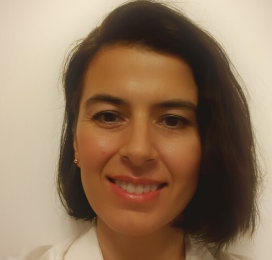Oracle Cloud Infrastructure (OCI) is known for its high-performance, secure, and cost-effective infrastructure services. Use cases for the Internet of Things (IoT) require robust cloud infrastructure, which is critical for businesses aiming to utilize real-time data from various sources. By working on an end-to-end solution using ThingsBoard and OCI, we provide the capability to manage and analyze data from IoT devices, thus providing support for IoT within the OCI ecosystem.

ThingsBoard capabilities
ThingsBoard is an open-source IoT platform for data collection, processing, visualization, and device management that offers the following features and capabilities:
- Device connectivity with standard IoT protocols (such as MQTT, CoAP, HTTP)
- Real-time data processing and analytics
- Customizable dashboards and widgets
- Rule engine for data filtering, aggregation, and transformation
- Robust security features, including device authentication and access control
These features make ThingsBoard an ideal partner for enhancing OCI’s IoT capabilities.
ThingsBoard installation in OCI
When installing ThingsBoard on OCI, you have the following deployment options:
- Use OCI’s ThingsBoard Marketplace image to directly deploy and have ThingsBoard available in a few minutes on a Compute virtual machine (VM) in your tenancy.
- Use Oracle Kubernetes Engine (OKE) to deploy ThingsBoard as microservices, providing a scalable and resilient architecture.
- Dor an on-premises setup using OCI VMs, you can install ThingsBoard as a service on the VM, with Kafka and Zookeeper using Docker for streamlined data streaming and coordination services. In this setup, the database, such as PostgreSQL, is installed directly on the VM to help ensure efficient data management.
- You can also deploy all components, including Kafka, Zookeeper, ThingsBoard, and your choice of database, such as PostgreSQL or another compatible database, using Docker for a fully containerized environment on-premises.
These installation methods (except using the OCI ThingsBoard Marketplace image) are detailed comprehensively on the official ThingsBoard website, offering step-by-step guides and best practices for optimal deployment.
Data aggregation from remote sensors
Our solution uses ThingsBoard features to aggregate data from remote sensors and devices and then securely transmit it to the OCI Streaming service, helping ensure that data from diverse and distributed sensors is consolidated efficiently. When data is in OCI through the Streaming service, you can use it in several ways: Stored in OCI Object Storage, in a database, processed through OCI Functions, sent to Analytics, and so on. For a tutorial on integrating ThingsBoard with OCI Streaming Services, see Integrate ThingsBoard with OCI Streaming Services.
Real-time data aggregation for and-to-and workloads
This integration allows you to run comprehensive end-to-end workloads on OCI. Businesses can be confident that data from remote sensors is immediately available for analysis and decision-making in OCI. This feature is particularly beneficial for applications that require immediate insights and responses, such as monitoring and maintenance systems, smart city applications, and more.
Benefits for healthcare and manufacturing industries
In the healthcare industry, real-time data from medical devices and patient monitoring systems can be crucial. This integration also facilitates the management of large datasets from various sources, helping ensure comprehensive health records and analytics.
For the manufacturing sector, real-time data from machinery and production lines can significantly enhance operational efficiency. The combined power of ThingsBoard and OCI helps ensure that sensor data is promptly analyzed to detect anomalies, predict maintenance needs, and optimize production processes. This combination results in reduced downtime, improved product quality, and increased overall productivity.
Conclusion
By integrating ThingsBoard with OCI, we provide a powerful solution for aggregating and analyzing IoT data. This collaboration not only supports real-time data aggregation but also empowers businesses to optimize their operations and make informed decisions. The end-to-end solution leverages the strengths of both platforms, delivering a seamless and efficient IoT ecosystem for our customers.
This integration encourages seamless data flow from remote sensors to OCI, allowing businesses to capitalize on real-time insights and make data-driven decisions.
Start off with an Oracle Cloud Infrastructure tenancy and test this IOT integration today!
For more information, see the following resources:
